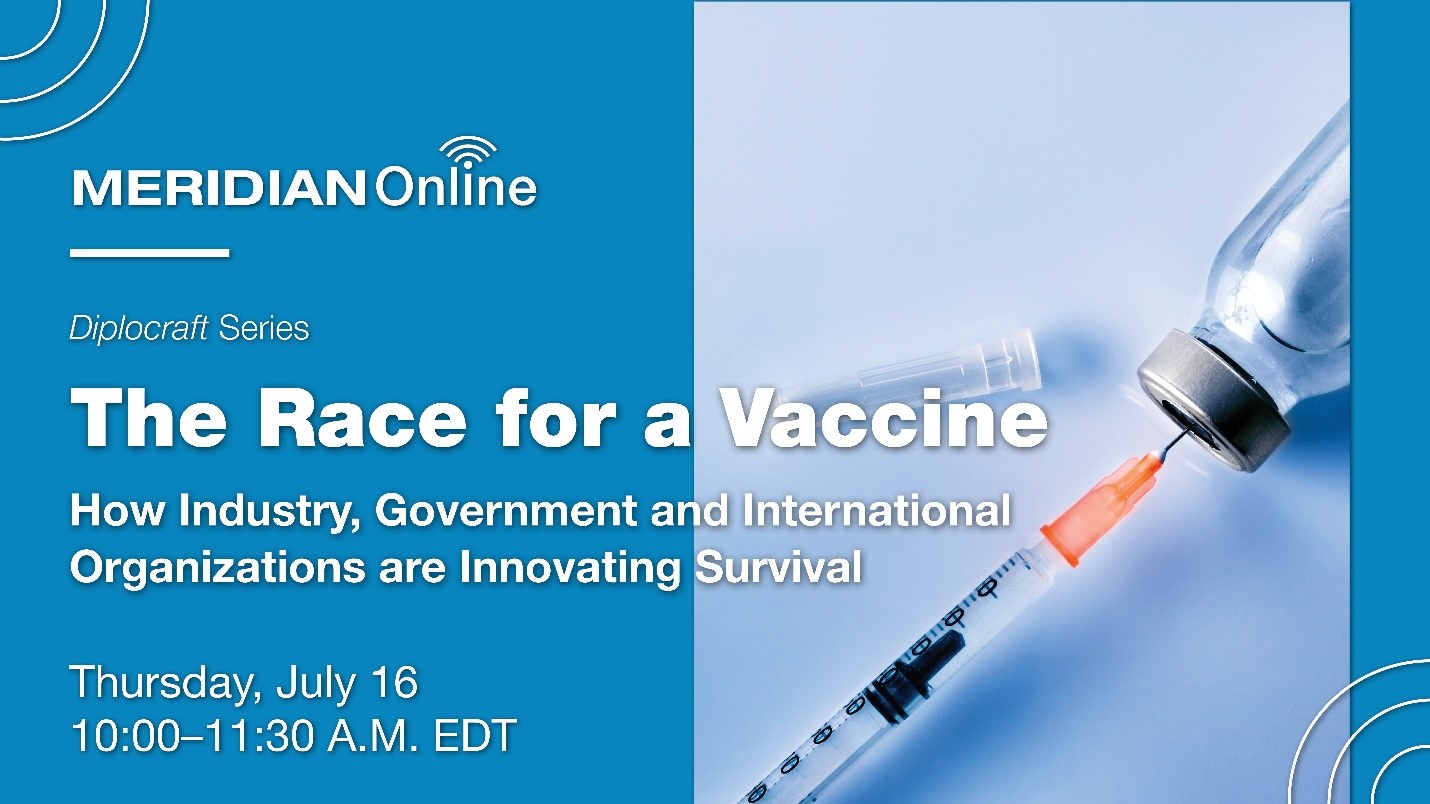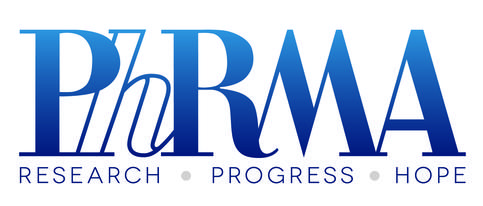The Race for a Vaccine: How the U.S. Government and Industry are Innovating Survival

On July 16, the Meridian Center for Diplomatic Engagement hosted a virtual roundtable discussion with health, economic, and trade counselors and attaches, alongside counterparts from the private sector to discuss the global race to develop a viable coronavirus vaccine. In partnership with Pharmaceutical Research and Manufacturers of America (PhRMA), the interactive briefing highlighted the U.S. pandemic response, the public private triumphs of collaborative research and innovations, and how trade and regulatory policies have impacted access. A Diplocraft program, the dialogue served as the kick-off event for Meridian and PhRMA’s trade and innovation series.
Moderated by Anna Levchuk, Healthcare Industry Head at S&P Global Market Intelligence, the program featured remarks from the following speakers:
Congressman Phil Roe, M.D. (R-TN)
U.S. Representative, 1st District of Tennessee
Dr. Hilary Marston
Policy Advisor for Pandemic Preparedness, National Institute of Allergy and Infectious Diseases (NIAID), National Institute of Health (NIH)
Dr. Janet Vessotskie
Deputy Vice President, Science and Regulatory Advocacy, PhRMA
Prof. Marc L. Busch
Karl F. Landegger Professor of International Business Diplomacy, Georgetown University
Below are the key takeaways from the conversation:
1. INVESTING IN RESEARCH
Scientists are using a wide range of techniques to explore potential treatments. While some techniques that are currently underway focus on novel approaches, many have been used in the development of other vaccines and build upon the experience garnered from previous outbreaks and existing knowledge about infectious diseases. This underscores not only the need to continue investing in research, but also highlights the potential of its wide-ranging impact, beyond that of COVID-19.
2. WHY 1,358 CLINICAL TRIALS ARE NECESSARY
Through Operation Warp Speed, the Trump Administration’s multiagency initiative, the U.S. Government is working on multiple fronts in collaboration with the private sector to accelerate vaccine development and manufacturing by providing funding, coordination, and regulatory support. Citing a 5-10% success rate for vaccine development, industry experts conveyed the importance of building a diverse research and development pipeline. There will be a need for more than one vaccine in order to make sure everyone around the world has access and at the end of the day, the “more shots on goal” the better.
3. SAFETY FIRST
Within four months of learning the virus’s genetic sequence, scientists were able to move on to the first human study, making the current push for a COVID-19 vaccine unmatched in its scale and speed. In comparison, it took 20 months after the sequence selection of the 2003 SARS virus before the first human injection. Despite this swift timelne, there has been an emphasis on demonstrating safety and reliability through rigorous clinical trials. Currently, the National Institute of Allergy and Infectious Diseases has 30,000 volunteers undergoing its phase 3 clinical trials.
4. MANUFACTURING AND DISTRIBUTION
The need to maintain global supply chains becomes even more critical as research continues to push forward. Biopharmaceutical companies are working to expand manufacturing capabilities in order to ramp up production of existing medicine with demonstrated benefit. They are investing in infrastructure and building manufacturing capacity to ensure that once a vaccine candidate is proven successful, distribution can commence immediately.
5. AT A TIME WHEN COVID-19 SHOULD BE BRINGING THE ECONOMY TOGETHER, IT IS INSTEAD TEARING IT APART
As the worldwide demand for pharmaceuticals, medical equipment, and personal protective gear increases, many countries, including the U.S., are favoring protectionist measures and implementing restrictions that obstruct international trade. The speakers, however, cautioned against efforts like the Buy American Act, which spurs local manufacturing, and argued that high tariffs and restrictions on export during this time would only hinder lifesaving supply chains. Trade will play a key role in economic revitalization and by adopting policies that keep the global supply chains moving, governments can lay the foundation for recovery.

Project summary
| The Race for a Vaccine: How the U.S. Government and Industry are Innovating Survival | July 2020 | |
|---|---|
| Number of Attendees: | 32 |
| Regions: | Africa, East Asia and Pacific, Europe and Eurasia, Western Hemisphere |
| Countries: | Angola, Austria, Botswana, Canada, Finland, France, Italy, Japan, Kenya, Mexico, New Zealand, Russia, Thailand |
| Impact Areas: | Global Health, Science and Technology |
| Program Areas: | Diplomatic Engagement |
| Partners: | Private Sector |